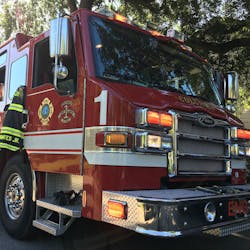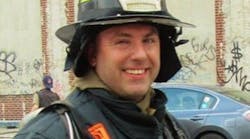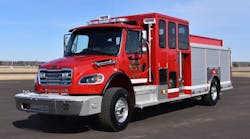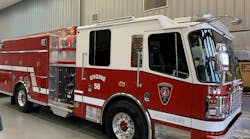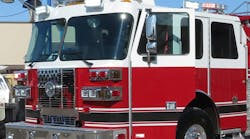Some Richland County fire trucks are short on firefighters, and it is putting parts of the county and firefighters themselves in danger, according to the local union president.
The short-staffed engines are a result of underfunding by Richland County, Columbia-Richland Firefighters Association president Jacob Eller said Monday. Eller released a letter to the media and on the union’s social media pages explaining how five of the county’s fire engines were running with one fewer person than is recommended.
National Fire Protection Association standards advise that the five Richland County trucks should carry four firefighters each to operate at minimum level of safety, Eller said.
Columbia Fire Chief Aubrey Jenkins said he had been assigning three firefighters to trucks that should have been carrying four because he “didn’t want to go over the budgeted amount” he received from the county.
The staffing shortage does not affect trucks within the Columbia city limits. The five understaffed trucks are:
- Engine 14, which serves the area around Two Notch Road and Decker Boulevard, near Interstate 20
- Engine 24, which serves the area around Two Notch Road and Sparkleberry Lane
- Engine 31, which serves the area at the end of Leesburg Road at U.S. 601
- Engine 32, which serves the area around Two Notch Road and Raven Road
- Engine 33, which serves the Arcadia Lakes area near Forest Drive
Four of the five engines that are “consistently” short-staffed are in neighboring areas, but they travel all around Columbia and Richland County, Eller said, so shortcomings are a county-wide issue.
Columbia-Richland Fire Service is governed and funded by a joint contract between the city of Columbia and Richland County. In December of even years, Jenkins — or whoever is the fire chief — submits budgets to the city and county, and each half picks up part of the bill.
This year, the city fully funded the fire service, allocating $23.6 million in its 2019-2010 budget. The county did not, Jenkins said. In July, when the county council approved its budget for the 2019-2020 fiscal year, it shorted the fire service around $1.8 million, according to the chief. Jenkins said he requested at least $23 million from the county, which would cover all costs, but instead received $21.3 million as of Aug. 5.
On the county’s biannual budget, the “fire service” bucket is given $28.2 million but Jenkins says a chunk of that money doesn’t go to him. He said he didn’t know what the additional $7 million was used for. Richland County’s administrator could not be reached Monday night to explain what the money is used for.
Richland County Council chairman Paul Livingston said he recalled Jenkins expressing concern about underfunding at one of the council’s meetings but the council must also balance many competing interests when crafting a budget.
“We take fire service and police service very seriously ... [but] we have limited resources,” Livingston said.
County councilman Joe Walker said he and some other council members were “lobbying” to get the fire service fully funded but the issue came up “a little late in the game,” from what he could remember.
Walker said he is hopeful the council will revisit fire service funding and reallocate money to meet Jenkins’ needs.
“We have a significant reserve fund that we could tap into if we need it,” though the money could also be taken from elsewhere in the budget, he said. Walker said donations the county pledged to charities might instead be used to fully fund vital services, such as fire.
The result is an almost-funded, almost-staffed fire service in a growing county. The fire service maintains mutual aid agreements, which require agencies that border Richland County and Columbia to assist in responding to emergencies, but Eller says that’s not sufficient.
Experienced firefighters and experts say the safest protocol in an emergency is for 15 firefighters to respond to a blaze in less than 8 minutes — when contents in a structure can reach temperatures that cause them to explode. With understaffed county engines, that means five trucks would need to show up on the scene instead of four.
The fire service’s response time or rating might be impacted in the long-term should the staffing issue continue — though Jenkins said hasn’t seen evidence of that happening yet — but more importantly, firefighters’ safety could be at risk.
“It puts us more at risk and it doesn’t allow us to provide as good of a service as we could,” Eller said.
Columbia-Richland fire service’s model also requires two firefighters to remain outside of a blaze in case they need to enter and rescue another firefighter, Jenkins said.
In the past, Jenkins said he has used volunteer firefighters to fill the gaps but that strategy can fail, too.
“I greatly appreciate what they do and they’re always willing to help, but they’re not readily available all the time,” Jenkins said. “They’ve got jobs and things like that.”
Still, the chief said he is hopeful the county will find a way to fully fund its fire service. If not, he’ll sit down with his budget and figure out other ways to cut expenses, he said.
———
©2019 The State (Columbia, S.C.)
Visit The State (Columbia, S.C.) at www.thestate.com
Distributed by Tribune Content Agency, LLC.
